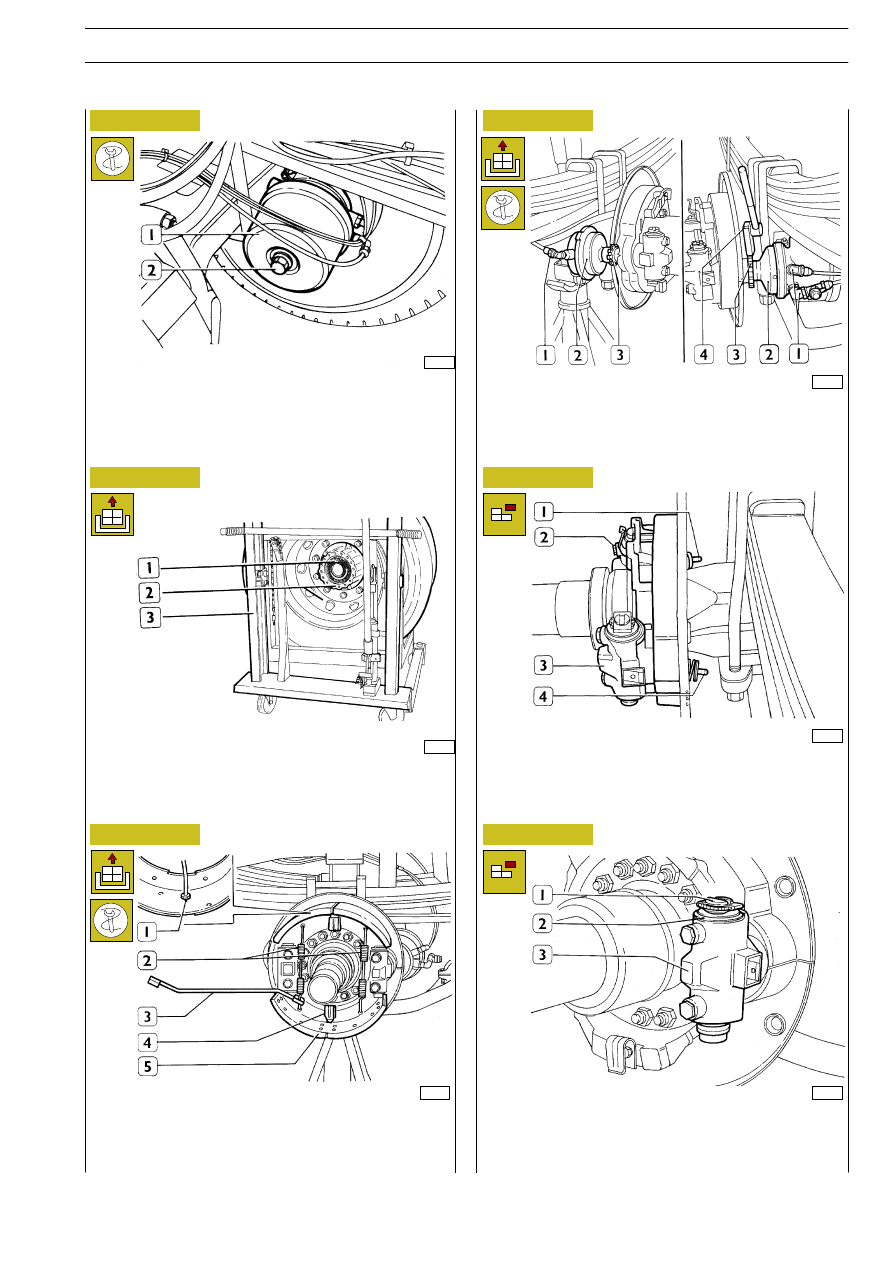Iveco EuroCargo (12 to 26 t). Manual - part 190

Before detaching the complete wheels, completely unscrew
manual unbraking screw (2) of combined cylinder (1).
38352
38704
38354
38355
Figure 150
Figure 151
Figure 152
Figure 153
Figure 154
Figure 155
With the help of tool 99372217 (3), detach jaws (4) checking
springs (2); detach jaws (4) from check brackets (5) after
having detached braking gaskets wear sensor (1).
Detach brake cylinders supply fittings (1). With wrench (4)
99356006 unlock ring nuts (3) and detach cylinders (2).
Withdraw control wedge units (1 and 4) from brake body (2
and 3).
With the help of a screwdriver, undrive metal ring (2) and
withdraw complete adjustment unit (1) from brake body (3).
36745
17243
By using hydraulic trolley 99321024 (3), detach wheel
completed with drum (2) and bearing (1).
E
URO
C
ARGO
T
ECTOR
12-26 t
PNEUMATIC SYSTEM - BRAKES
105
Base - February 2003